Kelanmee Shetland Sheepdogs
Where quality and conformation is everything
The Shetland Sheepdog
Illustrated Standard
(AUSTRALIAN BREED STANDARD EXTENSION)
GENERAL APPEARANCE CHARACTERISTICS TEMPERAMENT HEAD AND SKULL MOUTH EYES
EARS NECK FOREQUARTERS BODY HINDQUARTERS FEET TAIL GAIT/MOVEMENT
COAT COLOUR HISTORY ACKNOWLEDGEMENTS
COAT
Double; outer coat of long hair, harsh textured and straight. Undercoat soft, short and close. Mane and frill very abundant, forelegs well-feathered. Hindlegs above hocks profusely covered with hair, below hocks fairly smooth. Face smooth. The coat should fit the body and not dominate or detract from the outline of the dog. Smooth- coated specimens highly undesirable.
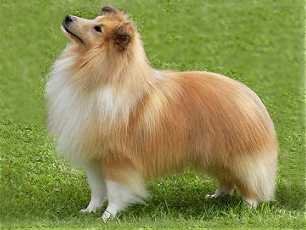 Clear Sable |
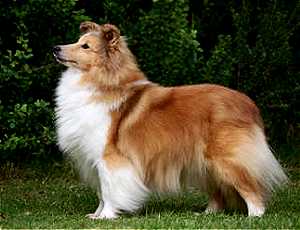 Sable |
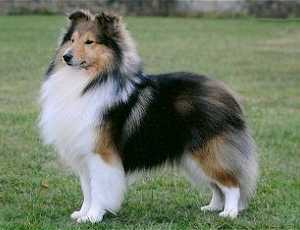 Shaded Sable |
 Tricolour |
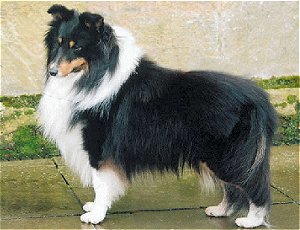 Bi-factored Tricolour (less tan) |
 Blue Merle |
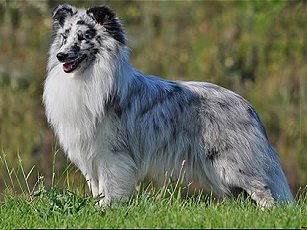 Blue Merle no tan markings - Bi-Blue |
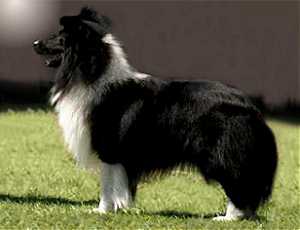 Black and White - Bi-Black |
This paragraph is self-explanatory. The correct double coat with the furnishing as described, is one of the breed’s chief beauties, while the texture offers maximum weather-resistance. When a dog is in full coat it is virtually impervious to rain. The incorrect soft, fluffy coat, however, will absorb moisture like cotton wool.
The so-called smooth coated specimen was fairly common during the breed’s formative years but is never seen nowadays.
COLOUR

Sable
TRICOLOURS: Intense black on body, rich tan markings preferred.
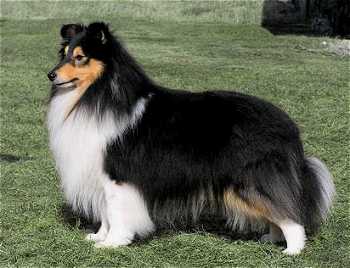
Tricolour
BLUE MERLES: Clear, silvery blue, splashed and marbled with black. Rich tan markings preferred but absence not penalised. Heavy black markings, slate or rusty tinge in either top or undercoat highly undesirable; general effect must be blue.
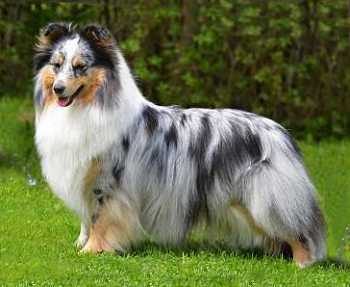
Blue Merle

Blue Merle (No tan markings)
BLACK & WHITE AND BLACK & TAN: are also recognised colours. White markings may appear (except on black and tan) in blaze, collar and chest, frill, legs and tip of tail. All or some white markings are preferred (except on black and tan) but absence of these markings not to be penalised. Patches of white on body highly undesirable.

Black and White
Little comment is required in the case of sables and tricolours except to point out the preferences for richness of tone and intensity of colour in the cases of the respective background colours, and the richness of tan markings in the case of the tricolours.
In the case of blue merles the requirements are more specific so present more difficulties to the breeder and to the judge. Blue merles should be blue (not iron grey or mostly black!). As the Standard requires, the blue should be a clear silvery blue splashed or marbled with black. Large black patches are unattractive as is a rusty tinge. A merle does not need to have tan markings but when these occur they should be rich, in which case they contribute a lot to the beauty of a good blue merle. Although colour in merles must always be an important factor, this must be taken into consideration with the whole dog.
In tricolours, the black should be really black (not rusty or "ticked" with white), the rich tan is preferred, but lighter tan not a fault, and the white must be really white
Sables may be all colours from a very pale gold to a dark rich shaded sable and all colours in between. Wolf sables (where there is a greyish hue) are undesirable. So called "wheatens" (an extremely pale sable) are permissible.
Coloured ticking on white legs should not be penalised in any of the colours. Quite understandably, most breeders and judges have their personal preferences as regards colour and (especially) white markings. The only real problem that may arise is if personal preference is allowed to become personal prejudice, and here judges must always be on their guard. However, there are always limits to which markings are acceptable from the point of view of general appearance. The Standard makes it clear that white patches (no matter how small) are not acceptable on the body (i.e. the trunk). A marking that disturbs the general effect of "great beauty" can only be regarded as a handicap, but such prejudices as, e.g. a white blaze, a white strip up the stifle, a dark muzzle on a shaded sable or odd eyes in a merle, must be kept firmly under control when judging.
SIZE
Ideal height at withers:
Dogs 37 cms (14½ inches);
Bitches 35.5 cms (14 inches).
More than 2.5 cms (one inch) above or below these heights highly undesirable.
The requirements here are precise, the only change being the fact that 2.5 cms (one inch) under the ideal height is as undesirable as 2.5 cms (one inch) over.
Shetland Sheepdog Summary
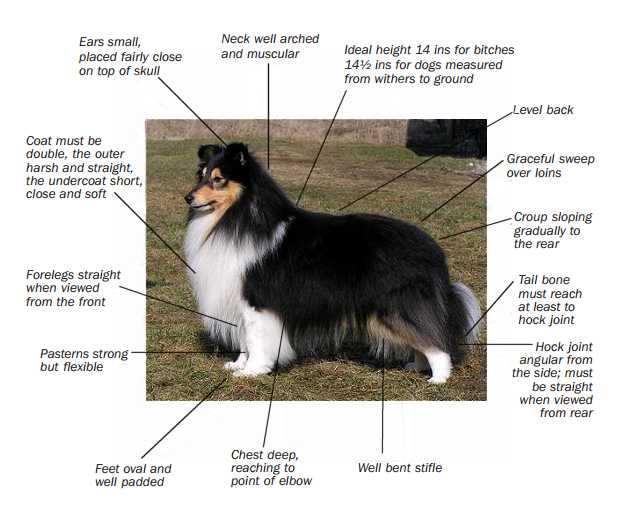
FAULTS
Any departure from the foregoing points should be considered a fault and the seriousness with which the fault should be regarded should be in exact proportion to its degree and its effect upon the health and welfare of the dog.
NOTE
Male animals should have two apparently normal testicles fully descended into the scrotum.
Page 5
Contact Details
Kim at Kelanmee SheltiesSouthern Highlands, NSW, Australia
Email : [email protected]
